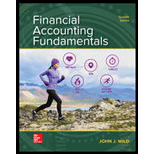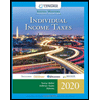
Concept explainers
Asset:
Asset may be regarded as a resource for the person or entity which holds it with a specific economic value and the benefits derived from such asset are generally divided over the lifespan of such asset .Also, they are held to reap some future benefits on account of pooling the funds at present. An asset may be in tangible or intangible form depending upon the nature of asset.
Equity:
An ownership interest in any kind of security or it may also be regarded as the difference value of the assets held and liabilities against the said assets. Also, in the financial statement of the company the funds contributed by the owners and any of the retained or ploughed back earnings (or losses) are regarded as shareholder's equity.
Liability:
A liability may be regarded as the burden or it depicts the obligatory aspect related to a transaction and that it is to be fulfilled in the near future. They mainly form part of the financial statements so that the end users may analyze the current standing of the entity in terms of its liabilities against the possession of its assets.
Net income earned or net loss incurred by the business during the year.
Want to see the full answer?
Check out a sample textbook solution
Chapter 2 Solutions
FINANCIAL ACCT.FUND.(LOOSELEAF)
- Determine other comprehensive income for 2018arrow_forwardIf the fixed manufacturing overhead volume variance for April was $9,000 unfavorable, then the total Budgeted fixed manufacturing overhead cost for the month was$__.arrow_forwardI am searching for the accurate solution to this general accounting problem with the right approach.arrow_forward
- Tartt Enterprises has inventory days of 48, accounts receivable days of 32, and accounts payable days of 27. What is its cash conversion cycle? A.) 40 days B.) 53 days C.) 65 days D.) 80 daysarrow_forwardI am trying to find the accurate solution to this financial accounting problem with appropriate explanations.arrow_forwardCan you solve this general accounting problem using appropriate accounting principles?arrow_forward
 Excel Applications for Accounting PrinciplesAccountingISBN:9781111581565Author:Gaylord N. SmithPublisher:Cengage Learning
Excel Applications for Accounting PrinciplesAccountingISBN:9781111581565Author:Gaylord N. SmithPublisher:Cengage Learning Individual Income TaxesAccountingISBN:9780357109731Author:HoffmanPublisher:CENGAGE LEARNING - CONSIGNMENT
Individual Income TaxesAccountingISBN:9780357109731Author:HoffmanPublisher:CENGAGE LEARNING - CONSIGNMENT





